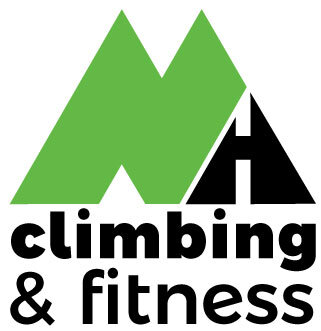Why Drew Ruana’s Frustration is… Inspiring
Ruana's 17-day battle with "The Ice Knife Stand" (V15) is a great reminder of why I don't siege nemesis boulders... and some other things too.
AUGUST 16, 2023
CLIMBING | STEVEN POTTER
Most people, myself included, like climbing on things that suit them. For me this means crimpy, technical, power-endurance lines (so long as the crimps aren’t too small) and a total absence of full-palm slopers, all-out dynos, wide spans, tiny feet, kneebars, heel hooks, toe hooks, or anything else that might make the movement feel hard for me. Unsurprisingly, my tick list—which I don’t actually keep track of—is shamefully free of so-called “nemesis boulders,” problems that are well-within my typical grade range but which, for any variety of reasons, just don’t go down easily.
I justify my refusal to devote days and weeks to nemesis climbs in several ways. First, I don’t have much time to climb, so when I do I like to dispatch things that feel good to me. Second, I’m a relative newcomer to my current climbing region, so it’s hard to justify diving into a nemesis when I still haven’t done most of the in-my-style classics. Third, I draw a fair share of emotional discomfort from my writing life, and I use climbing to escape feelings of doubt and inadequacy, so it’d be a bit counterintuitive to replicate them on the rocks.
Still, though: I like the idea of finding a nemesis and promptly summoning the emotional resilience to conquer whatever inconsequential adversity it represents. And I know, of course, that the problems that put up the biggest fight—problems that are hard or scary or make us throw our shoes—are the ones we actually feel proud of later on. And I am quite aware that it’s the willingness to get to work and slay a stubborn, under-graded nemesis that I most admire in professional climbers. Indeed, it’s because one of these pro climbers, Drew Ruana, just released an excellent short film about him sending one of his greatest nemesis problems to date—A V15 called The Ice Knife in Guellena Pass—that I’m writing this little op ed.
In the new video, which is the first episode in a six-part series filmed and edited by Alton Richardson, we watch Ruana, who’s 5’7” and has a negative one-inch ape index, discover that he’s unable to span between the holds used by previous ascentionists. For days he struggles to find a method—then settles on one—then proceeds to punt off the climb for weeks.
Watching it, I was fascinated by just how blatantly Ruana wears his frustrations on his sleeve. For thirteen minutes, we watch him fall and curse. We watch him fall and purse his lips and begin angrily scrubbing the holds. We watch him fall and bleed, fall and scream, fall and throw his chalk bag. And then, finally, when it seems like falling is Ruana’s only option, a thing he’ll go on doing until his dying day, he floats the boulder with the crisp ease so characteristic of his send videos.
For me this is a great reminder of (a) why I don’t actually invest my time and soul into nemesis boulders and (b) that when you look at it on the wrong time scale, when you consider the result without also considering the process, success sometimes looks far easier than it felt to the person who earned it. Because, as Richardson’s video shows, those 17 days were real. They were hard. They weren’t always fun. And seeing them has shown me that, aside from the near-infinite difference in strength and climbing talent, the difference between someone like me and someone like Drew Ruana is not that he doesn’t feel the frustration or hear the self-doubts; it’s that he gets up, wobbles, and tries again.
Maybe I’ll try it sometime.
About the Author
Steven Potter
Steven Potter is a digital editor at Climbing. He’s been flailing on rocks since 2004, has successfully injured (and unsuccessfully rehabbed) nearly every one of his fingers, and holds an MFA in creative writing from New York University.

